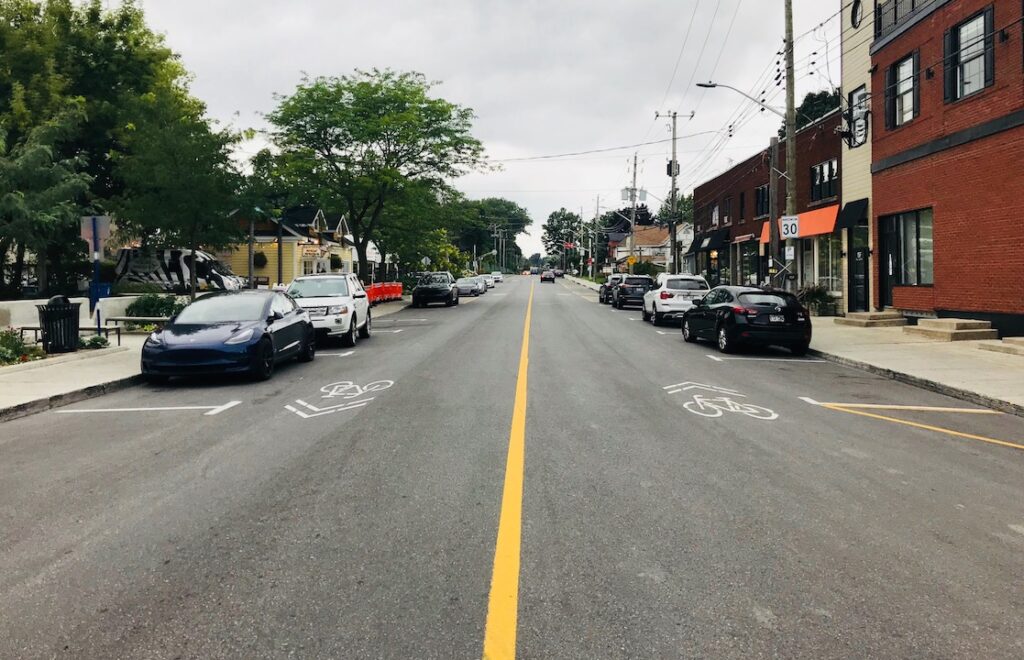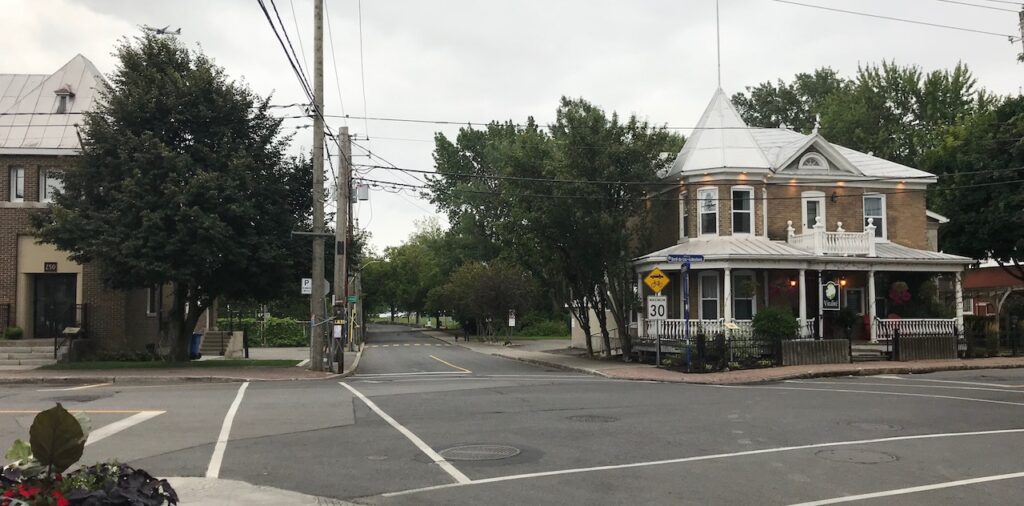This is the road that limestone and a railway built.

Pointe-Claire’s Cartier Avenue is currently a destination for West Islanders in search of clothing, coffee and crystals, beer and bagels, ice cream and antiques. But in the mid-1850s, it was called Station Road in honour of the train station at its north end. And flanking it was a railway spur line, laid by the Grand Trunk Railway to transport chunks of limestone, quarried in the area that is now the Beaconsfield Golf Club.
The Victoria Bridge—the first bridge built to span the St. Lawrence River—was being constructed to connect Montreal and the South Shore. The Pointe-Claire limestone would form the Victoria’s footings.
Workers quarried the boulders and loaded them—with the help of horses—onto flat cars that were pushed southward. The spur line extended onto a pier in the lake, from which the limestone was manually loaded onto barges that were pulled down river, through the Lachine Canal and onward to the Victoria Bridge work site.
Although the Victoria Bridge was opened in 1859, the quarry continued to provide limestone for other purposes into the 20th century.
Two decades after the Victoria Bridge was inaugurated, a group of boating aficionados leased the by-then-defunct railway pier from the Grand Trunk Railway to create the Pointe-Claire Boating Club on what became a manmade peninsula. It’s now the Pointe-Claire Yacht Club.
The utilitarian barges of the 1850s gave way to the pleasure craft of the 1880s, and the area evolved into a summer resort community for Montrealers.

Did you know about the history of the Simon Fraser House in Sainte-Anne-de-Bellevue? Read about it here.








